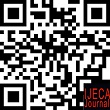Readiness of New Students Learning in The Network: Case Study
Abstract
A system that gives freedom of time, place and is not only oriented to the teaching staff who are currently also looking for as many digital references as possible to use in the application of every online course. However, the use of platforms and the use of technology need to be supported by adequate facilities and infrastructure so that the implementation of online learning can be carried out properly. The purpose of this study was to determine the extent of the readiness of new students to face online sharing in terms of facility readiness and platform utilization. The research method used a qualitative approach to survey techniques with sampling of the population using a snowball. Instruments in the form of documentation and structured interviews. The results showed that 95% of the new students in primary teacher education program majors at University of Borneo Tarakan were facilitated by supporting facilities and infrastructure to face online learning and 80% were familiar with the platforms used in general but there was no BEL UBT platform used by students. The solution provided, the existence of socialization and restrictions on the use of applications in teaching and learning activities online.
Keywords
Full Text:
Download [PDF]References
Adijaya, N., & Santosa, L. P. (2018). Persepsi Mahasiswa dalam Pembelajaran Online. Wanastra, 10(2), 105–110.
Gikas, J., & Grant, M. M. (2013). Mobile computing devices in higher education: Student perspectives on learning with cellphones, smartphones & social media. Internet and Higher Education, 19, 18–26. https://doi.org/10.1016/j.iheduc.2013.06.002
Gupta, A., & Maji, S. (2020). Overview of online learning. Our Heritage, ISSN: 0474(AUTUMN), 49–50. https://archives.ourheritagejournal.com/index.php/oh/article/download/707/686
Hidayanti, E. N., & Djumali. (2016). Penerapan Metode Edutainment Humanizing the Classroom dalam Bentuk Moving Class Terhadap Hasil Belajar. Jurnal Pendidikan Ilmu Sosial, 26(1), 1412–3835.
Ivanovich Agusta. (2014). Teknik Pengumpulan dan Analisis Data Kualitatif. Jurnal Studi Komunikasi dan Media, 02(1998), 1–11.
Khasanah, D. R. A. U., Pramudibyanto, H., & Widuroyekti, B. (2020). Pendidikan Dalam Masa Pandemi Covid-19. Jurnal Sinestesia, 10(1), 41–48. https://sinestesia.pustaka.my.id/journal/article/view/44
Nabila Hilmy Zhafira, Yenny Ertika, C. (2020). Pembelajaran Jarak Jauh di masa Pandemi. Jurnal l Bisnis dan Kajian Strategi Manajemen, 4(1), 37–45.
Naderifar, M., Goli, H., & Ghaljaie, F. (2017). Snowball Sampling: A Purposeful Method of Sampling in Qualitative Research. Strides in Development of Medical Education, 14(3). https://doi.org/10.5812/sdme.67670
Nasional, D. T. dan K. (2018). Empat Kelebihan dan Kekurangan Dalam Menerapkan E-Learning. policy paper. http://www.wantiknas.go.id/id/berita/empat-kelebihan-dan-kekurangan-dalam-menerapkan-e-learning
Rosali, E. S., Pendidikan, J., & Universitas, G. (2020). Aktifitas Pembelajaran Daring Pada Masa Pandemi Covid -19 DI. Geography Science Education Journal (GEOSEE), 1(1), 21–30.
Rusdiana, E., & Nugroho, A. (2020). R. (2020). Respon Mahasiswa Pada Pembelajaran Daring Bagi Mahasiswa Mata Kuliah Pengantar Hukum Indonesia UNESA.Integralistik,31(1), 1-12. Block Caving – A Viable Alternative?, 21(1), 1–9. https://doi.org/10.1016/j.solener.2019.02.027%0Ahttps://www.golder.com/insights/block-caving-a-viable-alternative/%0A???
Sofyana, L., & Rozaq, A. (2019). Pembelajaran Daring Kombinasi Berbasis Whatsapp Pada Kelas Karyawan Prodi Teknik Informatika Universitas PGRI Madiun. Jurnal Nasional Pendidikan Teknik Informatika (JANAPATI), 8(1), 81. https://doi.org/10.23887/janapati.v8i1.17204
Sugiarto. (2015). Definisi Penelitian Kualitatif Penelitian. Journal of Chemical Information and Modeling, 53(9), 1689–1699.
Susilo, A., Darojat, O., & Suhardi, D. A. (2020). Survei Kesiapan Dan Kepuasan Mahasiswa Terhadap Layanan Proses Pembelajaran Dalam Jaringan Universitas Terbuka Saat Pandemic Covid 19. Jurnal Pendidikan Terbuka Dan Jarak Jauh, 20(2), 114–130. https://doi.org/10.33830/ptjj.v20i2.839.2019
Wijaya, H. (2018). Analisis Data Kualitatif Model Spradley (Etnografi). Sekolah Tinggi Theologia Jaffray, 3(1), 1–10. https://repository.sttjaffray.ac.id/media/269015-analisis-data-kualitatif- model-spradley-aa4e183c.pdf
DOI: https://doi.org/10.31764/ijeca.v3i3.3303
Refbacks
- There are currently no refbacks.
Copyright (c) 2020 Kartini, Sucahyo Mas'an Al Wahid, Agustinus Toding Bua

This work is licensed under a Creative Commons Attribution-ShareAlike 4.0 International License.
IJECA (International Journal of Education and Curriculum Application) already indexed:










___________________________________________________________________
| |
____________________________________________________________________
IJECA Publisher Office:







.jpg)




